This article was medically reviewed by Lewis Chen, DDS, FICOI, FIADFE. Dr. Lewis Chen is a licensed Dentist in both New York and New Jersey, specializing in providing high-quality oral care in the form of preventative care. He holds an Economics degree from New York University. Dr. Chen earned his doctorate at Columbia University College of Dental Medicine. He graduated top of his class with the highest honors and distinction and was nominated and inducted into the only renowned, national dental honor society, Omicron Kappa Upsilon (OKU). He then completed a comprehensive training program at the Bronx VA Medical Center and, shortly after, decided to pursue multiple practice ownership and management. Dr. Chen has acquired numerous accolades over the years, including New York Academy of Dentistry Exemplary Professional Conduct Award, Academy of General Dentistry Outstanding General Practitioner Award, American Academy of Implant Dentistry Award, and Pierre Fauchard Foundation Award.
There are 8 references cited in this article, which can be found at the bottom of the page.
wikiHow marks an article as reader-approved once it receives enough positive feedback. This article received 14 testimonials and 100% of readers who voted found it helpful, earning it our reader-approved status.
This article has been viewed 373,278 times.
Braces are a tool used by orthodontists to straighten teeth, close gaps, and create a more uniform smile and bite pattern. Like any medical procedure or implement, braces are a commitment that requires advanced preparation as well as lifestyle adjustment in order for the treatment to be successful.
Steps
Planning Ahead of Your Braces Appointment
-
1Get preparatory dental treatment. Before thinking about braces, make sure that you have taken the correct steps to prepare:
- Go to the dentist. Get a standard teeth cleaning. Not only will this expedite the braces installation process but it will give your dentist the chance to fill any cavities that could be in a spot where the braces will go.
- Find a reputable orthodontist and make an initial appointment. Your dentist can likely recommend an orthodontist; you can also look online or in the yellow pages for orthodontists in your area.
- Remove wisdom teeth (if necessary). In some cases, there is room in the mouth for wisdom teeth and they will not need to be removed. However, if the teeth grow in crooked or are impacted because there is a lack of space, they will need to be removed before your braces are applied. This is so that they do not interfere with the treatment or modify the final result. Your orthodontist will check for this during your initial appointment and recommend the best course of action.[1]
-
2Prepare yourself, emotionally. Braces are a substantial commitment and require a number of lifestyle changes. They can also impact appearance, substantially in some cases. If you are nervous about getting braces, focus on some the benefits that will come from having had them, such as:[2]
- Straighter teeth
- Better oral health
- Improved self-esteem
- Natural perfect smile
- Correct bite with equally distributed forces
Advertisement -
3Research types of braces and think about what you to get. There are multiple options available, depending on your specific diagnosis:[3]
- Metal, or Traditional Braces: the most noticeable type, but these braces let you customize color of elastics more so than other types.
- Ceramic or Sapphire Braces: Clear or tooth colored so as to be less noticeable. Can stain more easily if not well-cared for.
- Lingual Braces: Attached to the inside of teeth, this is option is less visible, but more difficult to care for and not available for severe cases. Your tongue takes some time to adjust, so you may have some trouble with pronunciation at first. Treatment with lingual braces also usually takes longer.
- Invisalign: A series of 18 to 30 clear plastic molds that are replaced every two weeks. They shape your teeth gradually and less obtrusively than other types, but are more easily lost or damaged and, also, not available for severe cases.
-
4Create a playlist on your music player. Getting braces put on takes a couple of hours. Often dentists and orthodontists let you listen to your favorite music while they work. To build a playlist, think about how getting braces makes you feel (excited? worried? happy? nervous?) and build a playlist around those feelings, focusing on music that will bring you comfort, enjoyment, and reassurance, or maybe just a welcome distraction.
-
5Take a picture. A "before picture" will put into stark relief the transformation your braces will have on your teeth and overall oral health. Be sure to take a "during" and after picture as well to illustrate the change.
Considering What to Eat After Getting Braces
-
1Plan your meals. Know that for up to five days after getting braces, it will hurt to bite and chew, so create a meal plan of foods that are soft. Make sure that there is plenty of variety in the foods you eat so that you will not get bored of eating the same foods all the time.
- Avoid going on an all liquid diet. You want to balance being kind to your teeth without missing out on nutrition.
- Include dairy products such as milk, butter, yogurt, and cheese to ensure a good amount of calcium, magnesium, and potassium. These nutrients will help the bones to remineralize.
- Try to incorporate cold or chilled food when possible, as this can soothe any pain associated with braces and help reduce swelling.
- Get an immersion blender. Immersion blenders are perfect for making firm foods soft and pureeing soups and smoothies so they can be consumed without chewing.
-
2Go grocery shopping. It's tricky to plan a menu of cold foods, that require minimal to no chewing, but still provide enough nutrition to keep you going through the day. Below are some suggested food and menu items, focusing on nutritious foods that are soft, do not require chewing, and are easy to prepare:
- Breakfast: Yogurt and cottage cheese are good sources of low fat nutrition that are cold and won't require chewing.[4] . If you are lactose intolerant or vegan, consider oatmeal or quinoa. Although traditionally served as hot breakfasts, both can be prepared the day before and served cold with a little soy or almond milk.
- Lunch: Sticking with foods that are cold and soft, smoothies are available premade in most grocery stores or you can make one yourself. They can be made by combining a cup of greek yogurt with 1 1/2 cups of fruit or vegetable (your choice)1 cup of a complimentary fruit or vegetable juice, and 1 cup of ice.[5] . If lactose intolerant or vegan, silken tofu can be subbed for greek yogurt in equal amounts. You can also include soy milk, soy yogurt, veggie burgers, or other soy products as protein sources.
- Dinner: Soups are the perfect solution to ensuring food is soft and can be eaten without chewing. Vegetable soups particularly can ensure that you are getting a variety of key nutrients. There are even cold soups like vichyssoise or gazpacho that can be pureed to avoid chewing. If you are looking for something heartier than soup, consider pasta salads, or even tuna or chicken salad, which are all cold, and easy to chew.
- Dessert and snacks: Maintaining the theme of soft, cold, and easy to chew, the following items can act as desserts or snacks while waiting for the pain of getting braces to subside: Ice cream, chilled pudding, Jello, a mashed banana or mashed pears, frozen yogurt, or sherbet.
-
3Think about your post-braces diet, long-term. With braces on, it can be difficult to enjoy certain foods, like sub sandwiches, burritos, apples, corn on the cob-- basically anything that requires you to bite into food. Also consider that you'll be getting your braces adjusted multiple times yearly for the next 2-3 years and will have to revisit your soft food diet periodically. Finally, realize that there are certain foods that you should eat as rare as possible, or even avoid them completely while wearing braces:
Anticipating Oral Care Needs
-
1Visit the pharmacy. Getting braces will not be the most painful experience of your life, but it will be uncomfortable for a few days. Ease this with an over-the-counter pain reliever containing naproxen sodium, ibuprofen, or acetaminophen. Consult the pharmacist regarding dosage during the week after you get your braces or simply follow the instructions on the packaging.[8]
- Make sure that you eat something before taking any pain reliever.
-
2Ask your orthodontist. Your orthodontist knows how to prepare you for life with braces and will provide you with resources like dental wax and rubber bands to help with your treatment. They may also provide you with a "starter kit," containing samples of products that will help you adjust to life with braces and make the entire experience more bearable.
- You can use dental wax to cover the metal brackets on your braces so they're less likely to irritate your gums. This will help until your gums get used to them.[9]
-
3Follow a daily dental hygiene routine. Braces will require additional steps to ensure your teeth stay healthy and cavity free. Be sure to brush twice daily with a good-quality toothpaste and pay attention to what parts of your mouth are the hardest to reach. These parts will be even more difficult once you get braces, so start thinking about what would help you keep those areas clean.
-
4Create a shopping list. Your orthodontist can give you recommendations for products and brands that will help you keep your teeth clean while wearing braces. Below is a list of commonly suggested items:
- A waterpik. Braces make it difficult for ordinary brushing to do the job. Waterpiks spray a concentrated stream of water through the tip of a wand and can be used on even the hardest to reach corners of your mouth, which can eliminate the bacteria that gets stuck between your teeth and gums. This bacteria can cause your gums to bleed.
- Mouthwash. Braces make it easy for food residue to collect in and around your teeth. A rinse with mouthwash for 60 seconds can help and also ensure fresh breath and provide antibacterial protection.
- Threader Floss. Ordinary floss is difficult to use with braces; however, flossing is an important part of dental hygiene. Threader floss are small plastic strands with a long loop on one end. They can be threaded through the small gaps between teeth and the loop functions the same way floss would, removing obstructions like food residue and tartar.[10]
- Proxabrush or Bi-Level brush. A proxabrush is also called a "Christmas Tree Brush" because of its shape. It has a triangular, conical shape and can fit under the arch wire of your braces to give a thorough brushing. Or get a bi-level brush, designed with shorter bristles in the middle from brushing over your brackets.
- Oral Analgesic. While your mouth is adjusting to braces, it is not uncommon to experience sores on high-friction areas. There are liquid, gel, and paste types of oral analgesic; decide which one is right for your needs.
-
5Get a mouth guard. If you play sports, be sure to wear a mouth guard. With some sports, like basketball or football, mouth guards are already standard. When you are wearing braces, however, any athletic activity-- especially those that involve throwing a ball or physical contact with other players--could result in facial injury, stitches, veneers, or resetting the braces entirely if hit in the mouth. A mouth guard that fits your needs will be available at any athletics or sporting good store.
- You can also ask your dentist or orthodontist to provide you with a custom made mouth guard if the ones in the store do not fit properly because of your braces.
Expert Q&A
-
QuestionHow long will the pain last?
 Cristian Macau, DDSDr. Macau is an oral surgeon, periodontist, and aesthetician at Favero Dental Clinic in London. He received his DDS from Carol Davila University of Medicine in 2015.
Cristian Macau, DDSDr. Macau is an oral surgeon, periodontist, and aesthetician at Favero Dental Clinic in London. He received his DDS from Carol Davila University of Medicine in 2015.
Doctor of Dental Surgery In some patients pain may last a few hours and then it slowly reduces throughout the day. In other cases it can last up to 5 days but it depends on the clinical case, the amount of tension created by the metal wire and your pain threshold, which varies from patient to patient. If the pain is too intense, then your orthodontist may loosen the tension, so let them know if you have any discomfort.
In some patients pain may last a few hours and then it slowly reduces throughout the day. In other cases it can last up to 5 days but it depends on the clinical case, the amount of tension created by the metal wire and your pain threshold, which varies from patient to patient. If the pain is too intense, then your orthodontist may loosen the tension, so let them know if you have any discomfort. -
QuestionHow do they put on the braces?
 Cristian Macau, DDSDr. Macau is an oral surgeon, periodontist, and aesthetician at Favero Dental Clinic in London. He received his DDS from Carol Davila University of Medicine in 2015.
Cristian Macau, DDSDr. Macau is an oral surgeon, periodontist, and aesthetician at Favero Dental Clinic in London. He received his DDS from Carol Davila University of Medicine in 2015.
Doctor of Dental Surgery Braces are bonded to your tooth surface using an adhesive and a small drop of composite material. The procedure is more or less similar to a filling but requires a high precision, plenty of measurements and patience for placing the bracket in the right position.
Braces are bonded to your tooth surface using an adhesive and a small drop of composite material. The procedure is more or less similar to a filling but requires a high precision, plenty of measurements and patience for placing the bracket in the right position.
Things You'll Need
- mp3 player
- Aleve/Ibuprofen/Advil
- Soft foods
- Dental hygiene items
References
- ↑ https://www.absolutedental.com/blog/wisdom-teeth-removed-before-braces/
- ↑ Lewis Chen, DDS, FICOI, FIADFE. Licensed Dentist. Expert Interview. 11 May 2021.
- ↑ http://www.oralb.com/embraceit/types-of-braces
- ↑ https://runnelsortho.com/healthy-snack-foods-people-braces/
- ↑ http://docbraces.com/2014/01/best-foods-eat-new-braces/
- ↑ http://www.oralb.com/embraceit/getting-braces-put-on
- ↑ http://www.dentakit.com/howtoeatwide.html
- ↑ Lewis Chen, DDS, FICOI, FIADFE. Licensed Dentist. Expert Interview. 11 May 2021.
- ↑ Lewis Chen, DDS, FICOI, FIADFE. Licensed Dentist. Expert Interview. 11 May 2021.
About This Article
Before getting braces, ask your dentist to clean your teeth and fill any cavities you might have, which will make it easier for your orthodontist to put your braces on. Then, before the big day, make a playlist on your music player to calm your nerves and pass the time during the procedure, which can a few hours. Additionally, since your teeth will probably hurt for up to five days after getting braces, stock up ahead of time on soft foods like soups and fruit and yogurt for smoothies, and make sure you have some over-the-counter pain relievers on hand. For more tips from our Dental co-author, like how to keep up your oral hygiene after getting braces, keep reading!








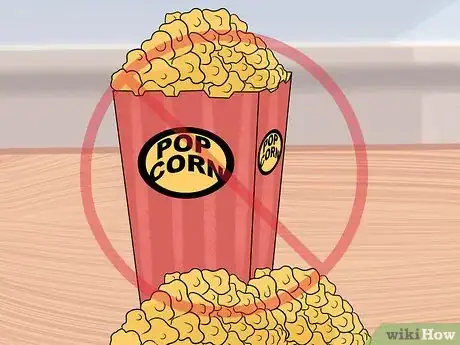





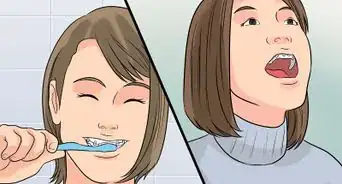




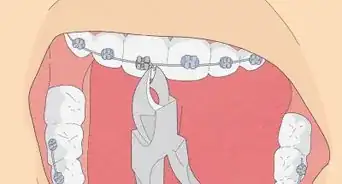





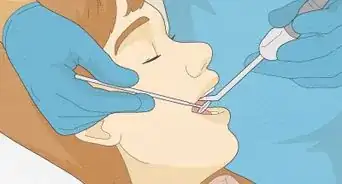










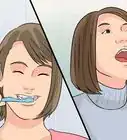






































Medical Disclaimer
The content of this article is not intended to be a substitute for professional medical advice, examination, diagnosis, or treatment. You should always contact your doctor or other qualified healthcare professional before starting, changing, or stopping any kind of health treatment.
Read More...